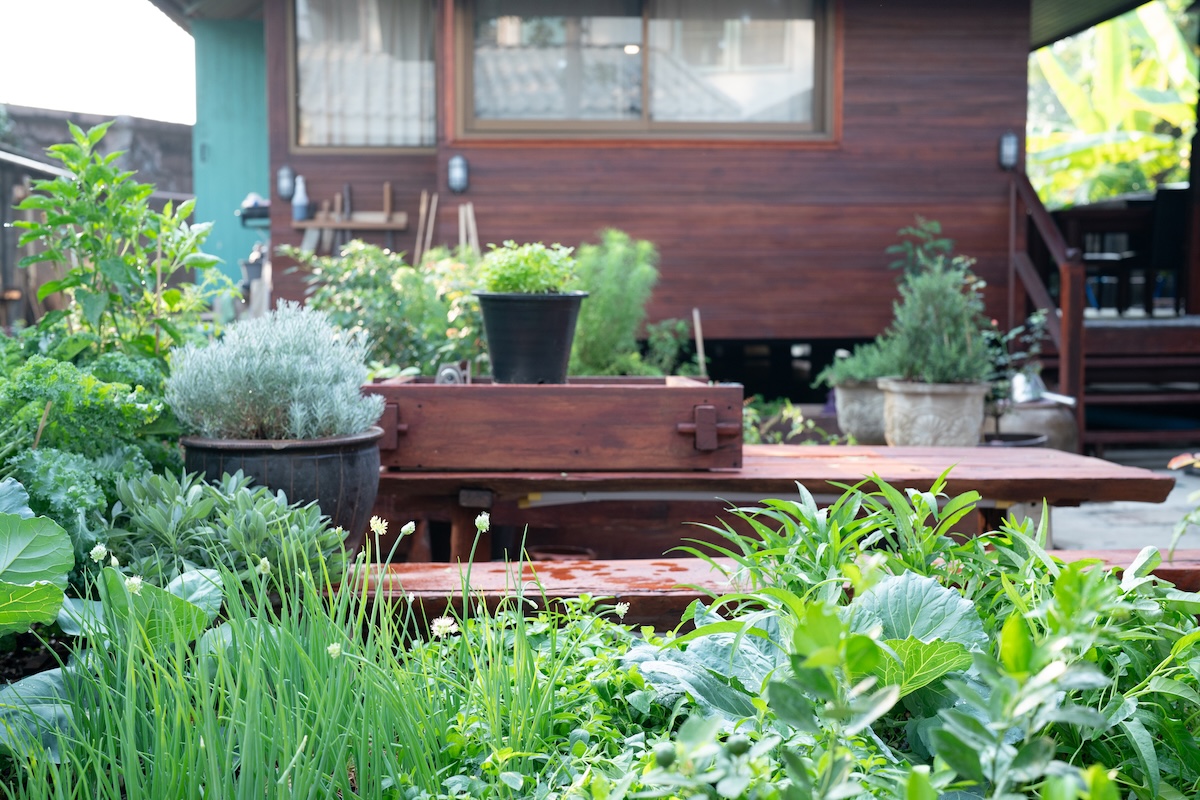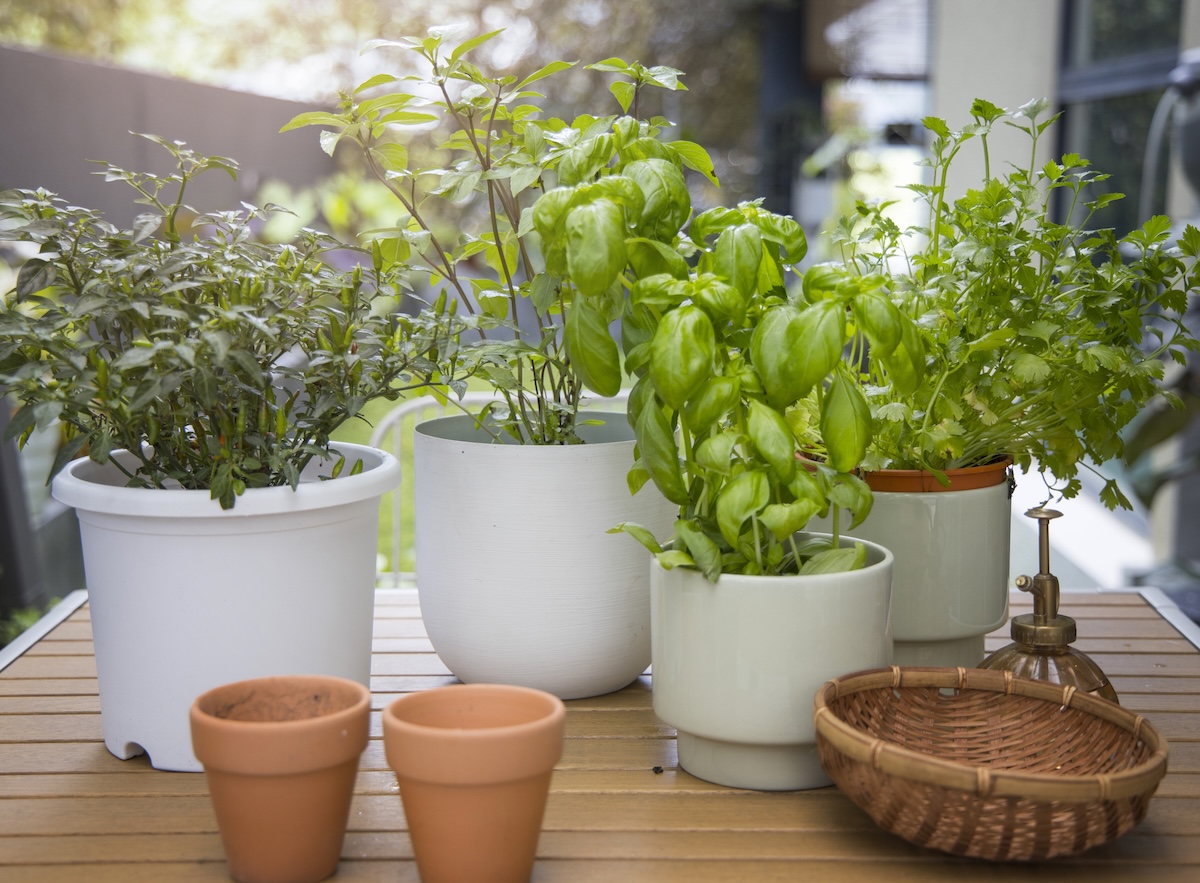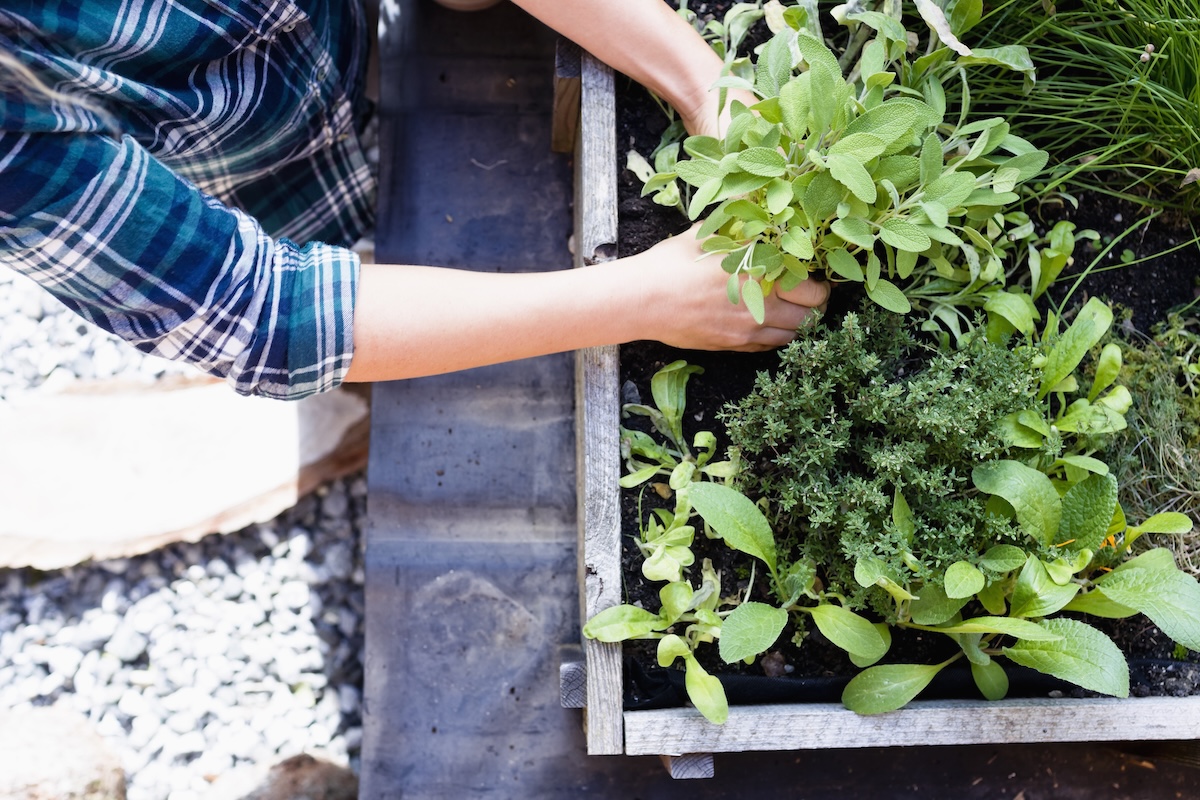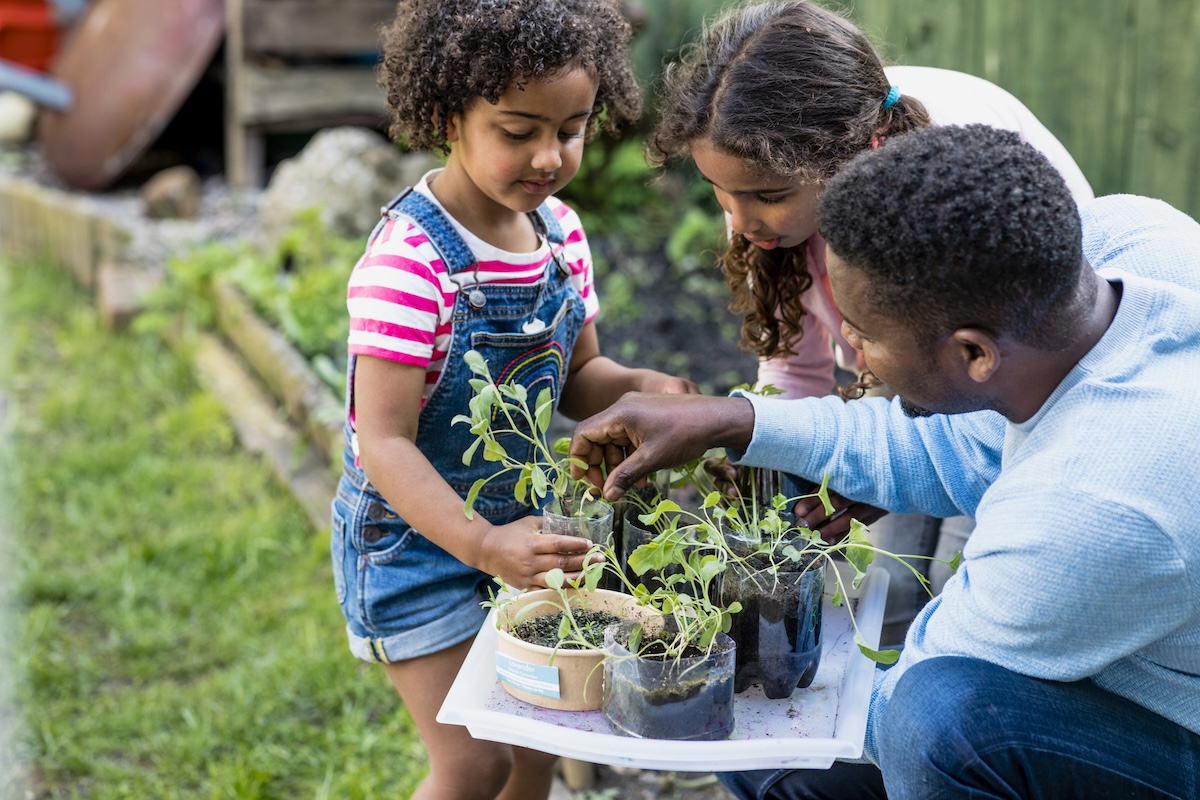

We may earn revenue from the products available on this page and participate in affiliate programs. Learn More ›
Herbs tend to be low-maintenance plants that can be grown in containers or in the ground. They provide fresh flavor to many dishes and offer countless medicinal benefits, from cardiovascular and anti-inflammatory aids to cancer-fighting properties, psychological boosts, and even pest control—not to mention that they often attract pollinators.
Growing herbs outdoors isn’t the only option. With sufficient lighting, most herbs can thrive indoors. For apartment dwellers, growing herbs in a planter is a space-saving alternative that doesn’t require a yard. The adaptability and diversity of these annual, bi-annual, and perennial plants creates numerous herb garden ideas.
1. Let the sunshine in.
An herb garden needs at least 6 hours of sunlight per day, so when planting herbs in the garden, be sure to select a sunny spot. Having said that, however, a few herbs, like parsley, chives, cilantro, and mint, thrive in partial shade, so save those for spots that don’t get as much sunlight. If you’re wanting to grow herbs indoors, electric light that mimics the full spectrum of sunlight can produce good results, and you can control the amount of light that the plants get to match their needs.
2. Choose the correct containers.
Herbs typically grow well in pots or containers. In fact, unless you want it to take over your yard, it’s wise to confine mint to a container.
The right herb garden container needs good drainage, especially because potted herbs tend to require more frequent watering than those grown in gardens. “Skip the decorative stuff and go functional,” advises Josh Payne, owner of Classic Landscapes. Oversized containers stress young plants, so he suggests starting with 4.5-inch and 6.5-inch pots because these sizes give roots room to establish while staying manageable.

3. Select the best soil.
Whether you planted your herb garden in the ground or in pots, the right soil is important to the plants’ overall health, Payne says. “The proper soil makes or breaks an herb garden,” she adds. In general, the best soil for herbs is rich, moist, well-drained, and fertile.
4. Bring them in or take them out.
Bring in pots of herbs to overwinter or grow them in indoor gardens year-round. Indoor herb plants need the same conditions as herbs grown outside: 6 hours of light, well-draining soil, sufficient water.
Get creative with indoor herb garden ideas. Grow your “tea herbs” like mint and lemon balm in a window near the kettle. Add a “cocktail” herb garden with lemongrass, holy basil, pineapple sage, mint, and rosemary. “They pair perfectly with gin, tequila, or tiki drinks,” says Jason Raffin, corporate executive chef for Plug & Chug Hospitality.
5. Please prune.
Pretty as they may be, herbs are usually grown to be harvested rather than merely admired. Harvesting, pruning, and pinching back the plants throughout their growing season encourages bushier, healthier plants and prevents them from bolting (going to seed).
Lanky, spindly branches should be pinched back to promote compact plants. Cut back soft herbs by as much as half. Cut back woody herbs by a third, being careful not to prune them back to bare wood at the base of stems.

6. Raise it up.
A raised herb garden can make gardening and harvesting easier. Other advantages include better control over the soil because you’ll add your chosen mix, plus you’ll see better drainage, fewer pests and weeds, and pleasing aesthetics.
Beds can be made of wood or metal in virtually any shape or size. They can be situated on a patio or incorporated into a larger vegetable garden. Note that raised beds will need drainage and because they tend to dry out faster than in-ground plantings, will need more frequent watering.
7. Use the buddy system.
If you have a vegetable garden, herbs make great companions, according to Marcy Lautanen-Raleigh, owner of Backyard Patch Herbs, a purveyor of dried herbs. “Plant strongly scented basil or garlic among your vegetable plants to keep away pests.” Planting herbs can help keep pests away in an environmentally responsible manner. Tansy, lavender, basil, mint, rosemary, lemongrass, thyme, chives, and cilantro can naturally repel pests.
Don’t forget that many herbs, such as dill, hyssop, marjoram, and lemon balm, will attract pollinators to your garden.

8. Landscape with herbs.
Don’t restrict yourself to buying herbs to plant in a garden. Many of these attractive plants can be used as borders and groundcovers. “Instead of just growing herbs in traditional garden beds, I integrate them directly into hardscape projects,” says Alex Ketty, owner of Glow Path Technology, a company that manufactures glowing landscape pavers. “Rosemary and lavender create stunning natural borders along stone walkways, while thyme fills gaps between pavers beautifully. Herbs aren’t just kitchen plants. They’re legitimate landscape design elements,” he adds. He groups Mediterranean herbs like sage, oregano, and thyme in geometric concrete planters, forming “herb rooms.”
9. Give it some thought.
One key aspect of herb garden planting is to have a plan. Start with your location: does it get enough sunlight? Is it big enough? Is it easily accessible? “The biggest mistake I see is people planting herbs as afterthoughts in leftover garden space,” Payne observes. “Treat them like the workhorses they are. Position them in your most accessible, well-draining spots where you’ll actually use them daily.”
Consider your expected culinary usage when selecting herbs to plant, because the more frequently they’re harvested, the better they grow.

10. Gather herbs in groups.
When planting potted herbs, Payne advises creating “herb zones” based on watering needs rather than looks. “Group your water-loving herbs like parsley and chives together, then place drought-tolerant ones like thyme and oregano separately. This prevents overwatering disasters that kill more home herb gardens than neglect.”
Similarly, an herb garden planter should contain plants that share light, soil, and moisture needs. Place taller herbs in the back and let trailing herbs spill over the front and sides.
11. Plant what you love.
Herb garden planting should be fun, so plant what you love. If you enjoy cooking, basil, oregano, thyme, and parsley may be on your list. If you want a cocktail herb garden, sage, mint, and rosemary might be better choices.
Don’t be afraid to experiment with new-to-you herbs to add fragrance, variegation, and fun. Lautanen-Raleigh suggests, “Try a variegated lemon thyme for a border, or pineapple mint to enjoy the bright white and green that can be seen in the moonlight, or even golden oregano to add a bit of spice.”
